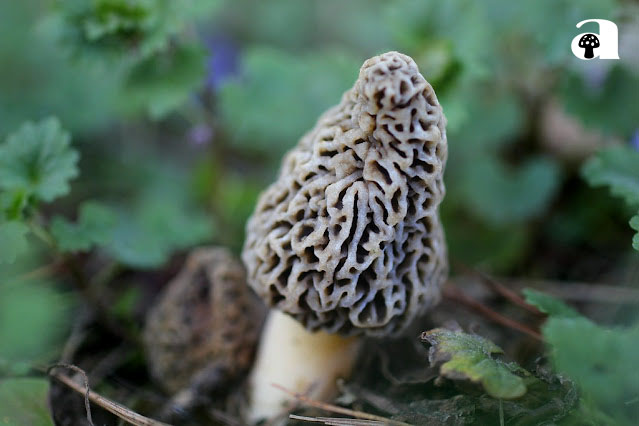Morel Mushrooms: A Culinary Delight
Morel mushrooms are revered and sought-after wild mushrooms worldwide, prized for their meaty texture and earthy yet nutty taste. Yet despite its widespread fame, this mysterious fungus remains one of the more difficult-to-locate specimens. People have long been intrigued by the morel mushroom, with its unusual honeycombed cap featuring wrinkled folds of dark, brown or yellow paint. Found across North America, Europe and Asia it grows during springtime deciduous forest areas such as Appalachian Mountains or Midwest United States forests.
What is the story behind the consumption of morel mushrooms?
The morels have a long tradition of consumption by humans and are highly sought-after for their flavor. They are a food item that can add flavor to food items and are an excellent source of nutrients. Because they are delicate and rare they are essential to collect them in the most sustainable way to ensure they grow in a healthy way.
The hunter of mushrooms often has to use their experience and resources to determine if it can be eaten or is poisonous. If you spot the morel mushroom in nature, you need to ensure that the one you've found is actually a morel, one that is safe to eat and not a clone and could make you extremely sick. Recent research on mating mechanisms and methods for feeding the mycelial colony have led advancements in the cultivation of morels.
Two researchers from Michigan State University and another from California created a buzz in the world of cultivation when they released their first patent that described methods for cultivating morel sclerotia and influencing these sclerotia into producing morels. Nowadays, there are ways to grow morels successfully in the controlled environment of a climate. But creating a cultivation system that is financially feasible is a huge problem.
What makes morel mushrooms unique and why can be difficult to harvest?
Part of the explanation lies within morel mushrooms' unique lifecycle. While other edible mushrooms depend on decomposing organic matter for sustenance, morels form mycorrhizal relationships with certain tree roots instead - making cultivation challenging as little is known about how to replicate these environments in controlled settings.
One of the greatest difficulties associated with morel hunting is their adept camouflage. Morels blend in perfectly with forest floor foliage, making them hard to spot without proper experience and knowledge. Experienced morel hunters know to look out for indicators such as tree species presence, soil temperature or even lunar phase as indications that morels might be nearby.
But despite these challenges, morel mushrooms continue to enthrall and inspire people worldwide. Their rich, umami flavor has earned it the nickname of the "meat of the forest," as well as being used as an ingredient by some top chefs. And for those willing to brave its challenges of hunting them down - few things beat discovering an abundance of these irresistibly delectable yet rare mushrooms!
Are you up to a challenge? Put on your boots and get out your mushroom-hunting knife - because the Marvelous Morel awaits! '
Morel mushrooms are highly sought-after for their meaty texture and earthy, nutty flavor, making them one of the world's most prized wild fungi. Additionally, morels have a unique life cycle, living off trees in which they symbiotically grow alongside each other, and their ability to blend into forests seamlessly - qualities this blog will explore further along with nutritional value, culinary uses, challenges of hunting morels as well as rewards associated with hunting them!
Morel Mushroom Nutrition Facts : Nutritional Value and Uses
- They are very low in calories, but high in nutrients.
- They are a great supply of vitamins and antioxidants and minerals.
- With just 31 calories per 100 grams morel mushrooms offer over half the daily recommended amounts of iron and copper.
- They also provide high quantities of vitamin D, manganese, B vitamins zinc and the mineral phosphorus.
- Morels have the highest level of vitamin D among edible mushrooms. They are also the only one of the edible wild mushrooms known for their high mineral content.
- A 100-gram serving of mushrooms has 12.2 milligrams iron, that is enough to meet the daily requirement for iron.
Morel mushrooms are both delicious and highly nutritious, boasting low calories, high fiber content and providing a variety of essential vitamins and minerals such as Vitamin D, Copper, Potassium and Iron. Plus, their abundance of antioxidants provides protection from disease.
Morel mushrooms are both delicious and highly nutritious, boasting low calories and high fiber levels to support weight management or digestion improvement. One cup (66 grams) of morel mushrooms provides approximately 20 calories and 2 grams of fiber.
Morel mushrooms are an excellent source of several essential vitamins and minerals, especially vitamin D - crucial for maintaining strong bones and an effective immune system. Just one cup of morel mushrooms provides up to 100% of an adult's daily recommended dosage!
Morel mushrooms are an excellent source of copper, an essential mineral essential to maintaining healthy metabolism and immune functions. One cup of morels contains approximately half the recommended daily allowance for adults.
Morel mushrooms are an excellent source of potassium, an essential nutrient for maintaining optimal blood pressure levels and supporting heart health. Just one cup of morels provides approximately 10% of an adult's recommended daily potassium intake.
Morel mushrooms contain iron, which is necessary to maintaining healthy red blood cells and warding off anemia. One cup of morels provides about 8 percent of an adult's recommended daily allowance of iron.
Morel mushrooms are an excellent source of antioxidants that can help to shield the body against damage caused by free radicals - those unstable molecules which damage cells and contribute to diseases like cancer and heart disease. Antioxidants help neutralize these free radicals to protect against their negative side effects on human bodies.
Morel mushrooms are an extremely nutritious food that can provide numerous health advantages. Low in calories and fiber-rich, they're chock-full of essential vitamins and minerals as well as powerful antioxidants - adding them to your diet can be an easy way to support overall wellness and support the way forward!
What are the health benefits of eating morel mushrooms?
Morel mushrooms may provide health benefits because of their high nutrient content.
- They're a great source of antioxidants that can shield the human body against free radicals and help reduce inflammation.
- They also have polysaccharides as well as high quantities of antioxidants which help to boost your immune system.
- They are also rich in fiber in the diet that is helpful in maintaining digestion health.
- They also are a natural food source for vitamin D which is vital to the health of bones and immune system.
- In addition, they possess anti-inflammatory and anti-tumor properties.
Although there has been limited research on human trials on morels the potential health benefits make them a healthy food item that can be incorporated in diverse dishes.
What is the story behind the consumption of morel mushrooms?
The morels have a long tradition of consumption by humans and are highly sought-after for their flavor. They are a food item that can add flavor to food items and are an excellent source of nutrients. Because they are delicate and rare they are essential to collect them in the most sustainable way to ensure they grow in a healthy way.
The hunter of mushrooms often has to use their experience and resources to determine if it can be eaten or is poisonous. If you spot the morel mushroom in nature, you need to ensure that the one you've found is actually a morel, one that is safe to eat and not a clone and could make you extremely sick.
Recent research on mating mechanisms and methods for feeding the mycelial colony have led advancements in the cultivation of morels. Two researchers from Michigan State University and another from California created a buzz in the world of cultivation when they released their first patent that described methods for cultivating morel sclerotia and influencing these sclerotia into producing morels.
Nowadays, there are ways to grow morels successfully in the controlled environment of a climate. But creating a cultivation system that is financially feasible is a huge problem.
Uses in Cooking
Morel mushrooms have long been prized as an ingredient by top chefs due to their succulent meaty flavor, making them popular choices in soups, stews, sauces and desserts alike.
You can sautee, grill or roast morels and pair well with chicken, beef, pork and fish dishes as ingredients or accompaniments.
One popular way to enjoy morel mushrooms is frying them in butter before serving as a side dish. Or use morels in a cream sauce served over pasta as another classic preparation option.
Furthermore, dried and rehydrated morel mushrooms can also be stored away to be used throughout the year as ingredients in recipes.
Confronting the Challenges of Morel Hunting
One of the primary obstacles of morel hunting lies in its elusiveness; these mushrooms often blend in seamlessly with forest floor foliage and are difficult to identify. Experienced morel hunters know to look out for indicators, such as specific tree species, soil temperature changes or moon phase to help pinpoint morels. Morels present an additional difficulty as mycorrhizal organisms that form relationships with tree roots. Because these environments cannot be replicated easily in controlled environments, morels are difficult to cultivate successfully.
Even with its challenges, many find the hunt for morel mushrooms highly rewarding. There's a certain sense of satisfaction associated with discovering an area rich with morels; and many hunters consider it to be an ideal form of meditation or relaxation. Morel hunting can be an enjoyable pastime, yet can also present its own set of unique challenges and frustrations. Here are some of the challenges associated with morel mushroom hunting:
Morels can be difficult to spot due to their ability to blend into their surroundings and obscured by foliage; their distinctive shapes and colors can be hard to recognize. Furthermore, morels only bloom for a brief period each year - typically spring - due to weather, soil conditions and presence of other organisms that affect growth.
Morel hunting remains an enjoyable and fulfilling activity for many people despite its challenges, offering thrills of the hunt in natural environments while rewarding you with delicious fresh morels from your harvest basket! For those willing to put in the effort, morel hunting remains a worthwhile pursuit!
Morel hunting is an increasingly popular springtime activity among outdoor enthusiasts and mushroom enthusiasts, drawing both mushroom enthusiasts as well as outdoor enthusiasts together in pursuit of these deceptively hard-to-find mushrooms with meaty textures and earthy, nutty aromas.
If you plan to set off on one yourself, here are a few morel hunting tips to increase your odds of success:
Location: Morel mushrooms thrive in certain environments, and hunters must understand where to search. Morels often can be found near certain trees such as ash, elm and poplar and tend to prefer moist soil that contains an abundance of organic matter. Finding an ideal spot can often prove challenging; hunters often need to travel long distances before finding success!
Competition: Morel hunting has become increasingly popular over time, creating increased competition for these mushrooms among hunters as well as animals like deer and squirrels who also like eating morels.
Weather Conditions: Climate can have an enormous effect on morel mushroom production and availability. Too much or too little rain, extreme temperatures or both can greatly impede mushroom growth, thus necessitating hunters to be aware of weather patterns when planning hunting strategies.
Poisonous Look-alikes: Morels have an easily identifiable appearance, yet other mushrooms with similar appearance may also be poisonous and must be distinguished from these morels before picking. Hunters need to identify all varieties of mushrooms to ensure they're picking morels and not risk-prone clones.
Know When to Go
Morel mushrooms typically appear during spring, depending on your location and weather conditions. In the Midwest United States, morels typically appear late April/early May - do some research in your region to establish when would be an ideal time for morel hunting! Morels thrive in wooded areas with both deciduous and coniferous trees, providing shelter from weather disturbances such as falling limbs or burnt soil areas. Look out for places where there has been recent disturbance, such as fallen trees or burns that has resulted in disturbed soil or litter accumulations.
Learn to Recognize Morels
Morels have an easily distinguishable appearance, featuring a honeycomb-shaped cap and hollow, white stem. There are different varieties of morels such as yellow morels, black morels and half-free morels; familiarize yourself with your area before heading out on an actual hunt.
Use Your Senses
Morels have an earthy aroma which can help you locate them easily. However, they're often camouflaged within their surroundings so use sight and touch to pinpoint where to search - look for areas with moist soil that lack ground cover.
Look Out For Indicators
Morels have long been associated with certain tree species such as ash, elm and oak trees; look out for them as indicators that morels may be growing nearby. Soil temperature can also provide clues as to where morels might be growing; an ideal temperature range for their appearance lies between 50-60 degrees Fahrenheit.
Prepare Properly
Be sure to dress for success during your morel hunt, wearing sturdy shoes or boots and long pants, along with a mesh bag or basket in which to collect your finds, along with a small knife for harvesting purposes.
Respect the Environment
When hunting morels, it's essential that we leave no trace. Avoid damaging the forest floor, harvest what can be used responsibly, take note of other wildlife's needs, and leave everything as you found it.
Do Not Give Up
Morel hunting can be a difficult and often frustrating endeavour, but with practice and persistence it can become easier over time. Don't give up if your first few trips prove fruitless; keep trying until you discover its thrill!
Morel hunting can be an incredibly fulfilling and fulfilling activity if you put in the time and effort necessary. By following these tips, your chances of success and the chances of becoming an expert morel hunter increase significantly. Just remember to respect the environment by leaving no trace behind, while enjoying all that this delicious mushroom offers you!
The morel mushroom is an intriguing and delicious fungus that continues to captivate people around the globe. Its unique life cycle, symbiotic relationship with trees and camouflaging make it one of the more mysterious and elusive mushrooms found in nature - but for those willing to brave its challenges of morel hunting there can be few greater rewards than unearthing an abundance of delicious morels!












.jpg)





